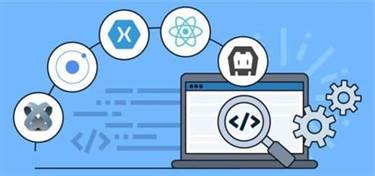An output artifact does not need to be completely defined to serve as input of object-oriented design; analysis and design may occur in parallel. In practice the results of one activity can feed the other in an iterative process. Lean is about only working on what must be worked on at that specific moment. The project team is focused on finding opportunities to eliminate waste, to drop unnecessary things like meetings, and minimising documentation.
- Figure 5 shows the generic life cycle stages for a variety of stakeholders, from a standards organization (ISO/IEC) to commercial and government organizations.
- SDLC models can therefore help projects to iterate and improve upon themselves over and over until essentially perfect.
- These self-tests should be used for initial testing, postinstallation testing, power-up diagnostics, field service, and depot repair.
- Training usually covers operational training for support staff as well as end-user training.
- A visual representation of teams working to this described cadence is shown in Figure 4 (Rosser et al. 2014).
- Every phase can be supplemented by various tools to support the phase’s main goal.
It’s where you determine the starting point and gather the necessary raw materials to craft a comprehensive process model. Depending on the type of data available, you can choose the most suitable approach to initiate the modeling process and proceed through the subsequent phases of the lifecycle. The world of process modeling has seen numerous advancements, yet it lacks a comprehensive representation that can holistically address the multifaceted demands of modern organizations.
DATASHEET
It’s linear and straightforward and requires development teams to finish one phase of the project completely before moving on to the next. Once you’ve come up with some ideas, it’s time to organize them into a cohesive plan and design. This requires a lot of research and planning to ensure that your final product meets your expectations (and those of your customers). The big step is creating a detailed project plan document and work breakdown structure that outlines the requirements. Each company will have their own defined best practices for the various stages of development.
The iterative and phased stages of an SDLC benefit from the leadership of a dedicated project manager. The major goal of an SDLC is to provide cost effective and appropriate enhancements or changes to the information system that meet overall corporate goals. The project manager is responsible for executing and closing all the linear steps of planning, building, and maintaining the new or improved system throughout the process.
Other methodologies combined with System Development Life Cycle
Software can be electronically bought, sold, delivered, and upgraded anywhere in the world within reach of digital communication, making its logistics significantly different and more cost-effective than hardware. It does not wear out and its fixes change its content and behavior, making regression testing more complex than with hardware fixes. Its discrete nature dictates that its testing cannot count on analytic continuity as with hardware. Adding 1 to in a 15-bit register does not produce 32768, but 0 instead, as experienced in serious situations, such as with the use of the Patriot Missile. A platform for developing cloud-native applications that automate business decisions and processes.

These self-tests should be used for initial testing, postinstallation testing, power-up diagnostics, field service, and depot repair. The recipient of each test result and the action to be taken if the system passes or fails each test must be stated. A stage in the systems life cycle that translates the design specifications produced during the design stage into software program code. The new seven phases of SDLC include planning, analysis, design, development, testing, implementation, and maintenance. One of the upsides to this model is that developers can create a working version of the project relatively early in their development life cycle, so implement the changes are often less expensive. New versions of a software project are produced at the end of each phase to catch potential errors and allow developers to constantly improve the end product by the time it is ready for market.
System Development Life Cycle
The methods employed for this data collection can vary widely, from conducting in-depth interviews with process owners and key personnel to reviewing existing process documentation, such as manuals or guidelines. Sometimes, it may even involve firsthand observation of the process in action, providing valuable insights into real-world dynamics and nuances. Software is a flexible and malleable medium which facilitates iterative analysis, design, construction, verification, and validation to a greater degree than is usually possible for the purely physical components of a system. Each repetition of an iterative development model adds material (code) to the growing software base, in which the expanded code base is tested, reworked as necessary, and demonstrated to satisfy the requirements for the baseline. The Pre-specified Multi-step process splits up the development in order to field an early initial operational capability and several P3I’s. It is best if the product’s full capabilities can be specified in advance and are at a low probability of significant change.

In the 1960s, mainframe computers hit the consumer market, and living rooms came to be filled with large systems.
Attributes of a Systems Analyst
The scope of this document is the same as ISO/IEC/IEEE 15288, which addresses more than systems engineering activities. This document provides general guidance for each ISO/IEC/IEEE process and process outcome in the context of SoS, but it does not address specific activities, tasks, methods, or procedures. Additional processes and process outcomes unique to SoS can still be needed and are not covered by this document. This document explores the similarities and differences between systems and SoS and, by extension, the similarities and differences between engineering of systems and SoS. The guidance contained in this document is expected to evolve as the discipline matures.

Regardless of which model or framework is selected a program starts with a vision, a budget and usually a period of performance. Then the program’s stakeholders identify the highest value capability to develop first. The list of capabilities is prioritized so that the long-term development is visible.
Systems Design
The standard can be applied to the unit testing of any digital computer software or firmware and to the testing of both newly developed and modified units. In the Agile SE process, the systems engineer works in an iterative, incremental manner, continually modeling, analyzing, developing, and trading options to bring the definition of the system solution into focus. An example of this work will be analyzing and maintaining not only the requirements but also the architectural https://www.globalcloudteam.com/ model of the higher-level requirements and the linkage from those high-level requirements to the analyzed lower-level requirements. In addition to the requirements and architecture representations, maintaining and verifying the interfaces are defined and followed as the development progresses are some of the systems engineers’ tasks. These responsibilities of systems engineers are the same regardless of the life cycle, although sequencing and organization may be different.

With its customizable spreadsheet interface and powerful collaboration features, Smartsheet allows for streamlined project and process management. Use Smartsheet’s SDLC with Gantt template to get started quickly, and help manage the planning, development, testing, and deployment stages of system development. Create a timeline with milestones and dependencies to track progress, and set up automated alerts to notify you as anything changes. Share system life cycle process your plan with your team and key stakeholders to provide visibility, and assign tasks to individuals to ensure nothing slips through the cracks. The life cycle model is one of the key concepts of systems engineering (SE). A life cyclelife cycle for a systemsystem generally consists of a series of stagesstages regulated by a set of management decisions which confirm that the system is mature enough to leave one stage and enter another.
System Life Cycle
For these systems to remain robust against disruption they must be architected to agilely adapt. To meet these needs, the system must be assessed to apply the process that best serves the system, subsystem or component of the system of interest (SOI). The Evolutionary Sequential model involves an approach in which the initial operational capability for the system is rapidly developed and is upgraded based on operational experience. If something does not turn out as expected and needs to be changed, it will be fixed in thirty days at the time of its next release. Rapid fielding also fits this model for larger or hardware-software systems.
